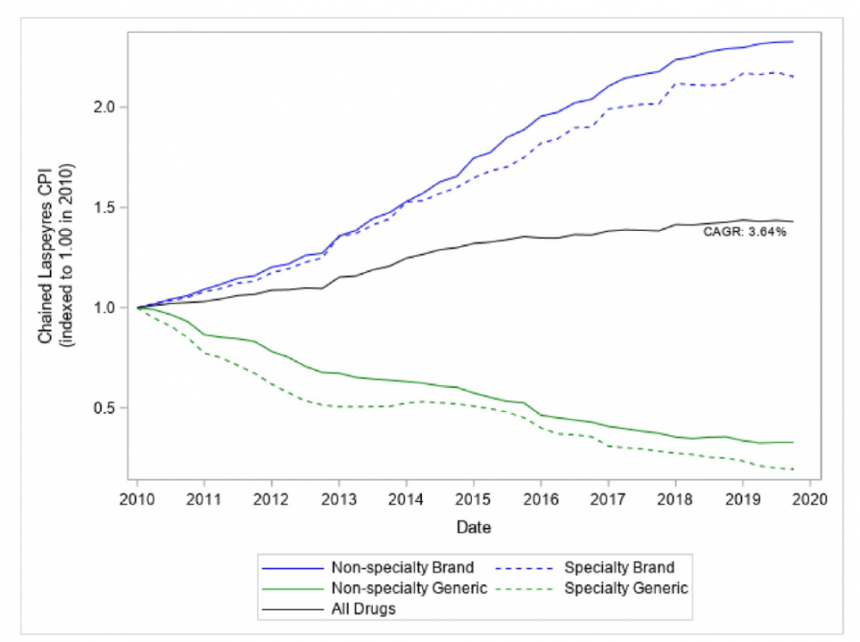The Prescription Drug Consumer Price Index (CPI‐Rx) by the Bureau of Labor Statistics focuses on price changes for drugs dispensed at outpatient retail pharmacies. However, excluding physician-administered drugs, especially specialty drugs, may skew the CPI-Rx results.
A study by Hicks, Berndt, and Frank (2024) delves into the impact of including physician-administered specialty drugs in the CPI-Rx. Specialty drugs accounted for 55% of U.S. drug spending in 2021, highlighting their significance. By analyzing data from 2010-2019, the authors found that including specialty drugs in the CPI led to a higher growth rate compared to the standard CPI-Rx, indicating the importance of their inclusion.
While the inclusion of specialty drugs raised the CPI-Rx, it’s interesting to note that prices for non-specialty drugs actually increased at a faster rate. This phenomenon is attributed to various factors, such as launch prices of specialty drugs and the composition of the drug categories in the index. Despite not accounting for drug rebates, the study provides valuable insights into the impact of specialty drugs on CPI-Rx.
For a detailed analysis, you can access the full paper here.





